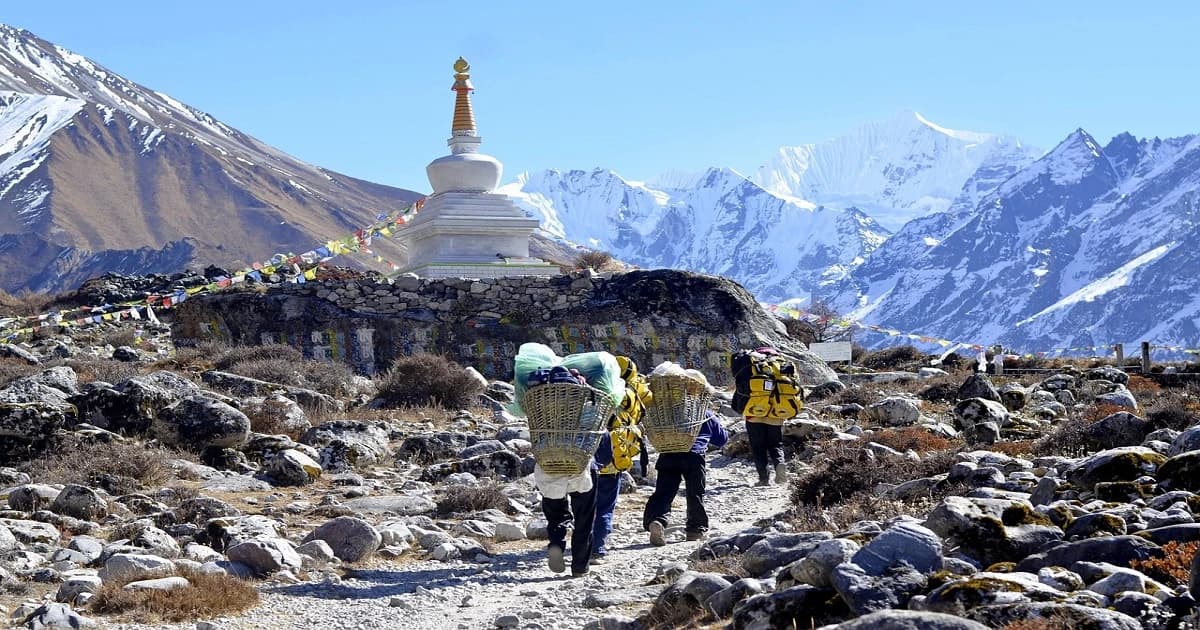Langtang Valley Trekking has aptly been referred to as "the valley of glaciers," and the name barely does the area justice. Lying between Nepal's mid-Himalayas and Tibet, Langtang is where rough peaks rise above yak graze, whip-flung Buddhist prayer flags flutter, and welcoming Tamang villages bid trekkers with smiles.
For those looking for a Himalayan trek with unbridled nature and authentic cultural immersion - without the crowds of Everest or Annapurna - Langtang is the perfect alternative.
Why Langtang Valley Excels?
Langtang offers a strange mix of proximity and remoteness. Only a day's hike from Kathmandu, the trek drops you into a virgin mountain kingdom in no time. The valley is part of Langtang National Park, where you can find the red panda, Himalayan black bear, and more than 250 species of birds.
Culturally as well, the trek is remarkable - villages here are dominated by Tamang, and their culture is a mixture of Tibetan Buddhism and indigenous practices different from their Tibetan relatives.
In April and May, the hills are decked with pink, red, and white rhododendrons, and in autumn, crystal-clear mountain vistas await. And unlike the touristy trails, here one will get to walk for hours with nothing but river and wind sounds.
Highlights of the Adventure
- Panoramic views of Langtang Lirung (7,227m) and nearby peaks
- Cultural experience in Tamang and Sherpa villages
- Expedition to Kyanjin Gompa, a high-altitude Buddhist monastery
- Panoramic day treks to Tserko Ri (4,984m) and Kyanjin Ri (4,773m)
- Glacier valleys, yak grazing and alpine meadows
- Good wildlife in Langtang National Park
- Easy access from Kathmandu for other treks
Best Time to enjoy Trekking in Langtang Valley
You can enjoy the adventure the best in Langtang valley in two seasons:
- Spring (March–May): Good weather, green, and flowering rhododendrons. Best for nature lovers and photographers.
- Autumn (September–November): Clear sky, good visibility, and stable weather—best for high mountain landscape.
- Winter (Dec-Feb) offers solitude and white trails but with icy temperatures. Monsoon (Jun-Aug) is rainy with leeches in the lower levels and bleak imaginations, but the valley turns a deep green color.
How Difficult is Trekking in Langtang?
Langtang Valley trek is an easy one. You will trek 5–7 hours a day with gradual altitude gain. Kyanjin Gompa (3,870m) is the overnight camp top, and by exploring some extra optional trekking, you reach up to almost 5,000m. There is no technical climbing experience required for this trek, but physical endurance and little trekking experience add to the pleasure of this trek.
The hardest is altitude—AMS at or higher than 2,500m is potential and acclimatization gradually must be achieved.
Accommodation and Food on the Trek
Langtang Valley provides teahouse trekking—small family-owned tea houses. The rooms are minimal, usually two beds and plenty of blankets, but take a sleeping bag to use if there is an emergency if it is a little bit cold. The toilets range from squat style to some with Western facilities.
Meals are hearty and often sourced locally. You’ll find:
- Dal Bhat (rice, lentil soup, and vegetables) – unlimited refills
- Tibetan bread, pancakes, and porridge for breakfast
- Noodles, fried rice, and momos (dumplings) for lunch or dinner
- Herbal teas, coffee, and sometimes hot chocolate
Buying food and drinks supports local livelihoods, and you’ll often share meals with fellow trekkers around a wood stove.
Culture and People of Langtang
The Langtang region is home to Tamang and Sherpa communities, whose traditions are deeply tied to Tibetan Buddhism. Villages are adorned with prayer wheels, chortens (stupas), and mani stones carved with sacred mantras. During your trek, you’ll likely be invited into a kitchen warmed by a clay stove, sipping butter tea while listening to local stories.
Homes and villages were destroyed in the earthquake of 2015, but their warm hospitality and welcoming nature suggest their resilience. Treks here are not merely a walk—money directly benefits sustainability and recovery of the local community.\
Wildlife and Nature
Langtang National Park is heaven for nature enthusiasts. European black bear, wild boar, and red pandas live at lower altitudes. Blue sheep or Himalayan thar is seen grazing slopes at high altitude. It's heaven for birding too with the likes of Himalayan monal, impeyan pheasant, and snow partridge.
Plant cover is diverse with altitude—from subtropical rain forest to alpine meadows, finally succumbing to glacial moraine around Kyanjin Gompa.
Preparation and Packing Advice
To make the most of the trek, preparation pays:
- Fitness: Train with hikes, cardio, and leg-strength exercises.
- Equipment: Bring layered clothing for variable weather, down-filled coat, trekking sticks, support boots for hiking, and a sleeping bag for nights below freezing.
- Health: Bring Diamox for high altitude, and a personal first-aid kit.
- Cash: ATMs are not available on the trail—carry lots of Nepali rupees.
Wise but light packing for being comfortable without carrying too much.
Responsible Trekking
Langtang is a fragile beauty. Be responsible and assist in its conservation by:
- Not using single-use plastics - take a refillable water bottle along with purification tablets.
- Wandering on beaten paths to prevent erosion.
- Not offending local traditions - ask for permission before photographing people or sacred sites.
- Contributing to society by staying at family-run teahouses and buying local products.
Why visit Langtang when there are other Treks?
Langtang Valley stands out from others because it is shorter, relatively accessible, and culturally fascinating, the perfect option for busy trekkers. It is less touristy than Annapurna or Everest but not any less beautiful and worth visiting. You get the excitement of high-altitude summits without having to trek for weeks, and since it abuts on local villagers, it is intensely intimate.
Langtang Valley Trekking isn't only a trekking - it's discovering a living culture, a endurance test, and a proof of man and nature's centuries-old relationship. You might be standing on Tserko Ri's summit, gazing out at Langtang Lirung blessed by the dawn's early light, listening to tales of Tamang hosts over a hot dal bhat, or sitting quietly and waiting to hear the river's song, but the valley invites you to rest and live.
In a world that often moves too fast, Langtang is the gift of quiet, of beauty, and of connection. And once there, part of your heart will always remain among its hills and prayer flags.





